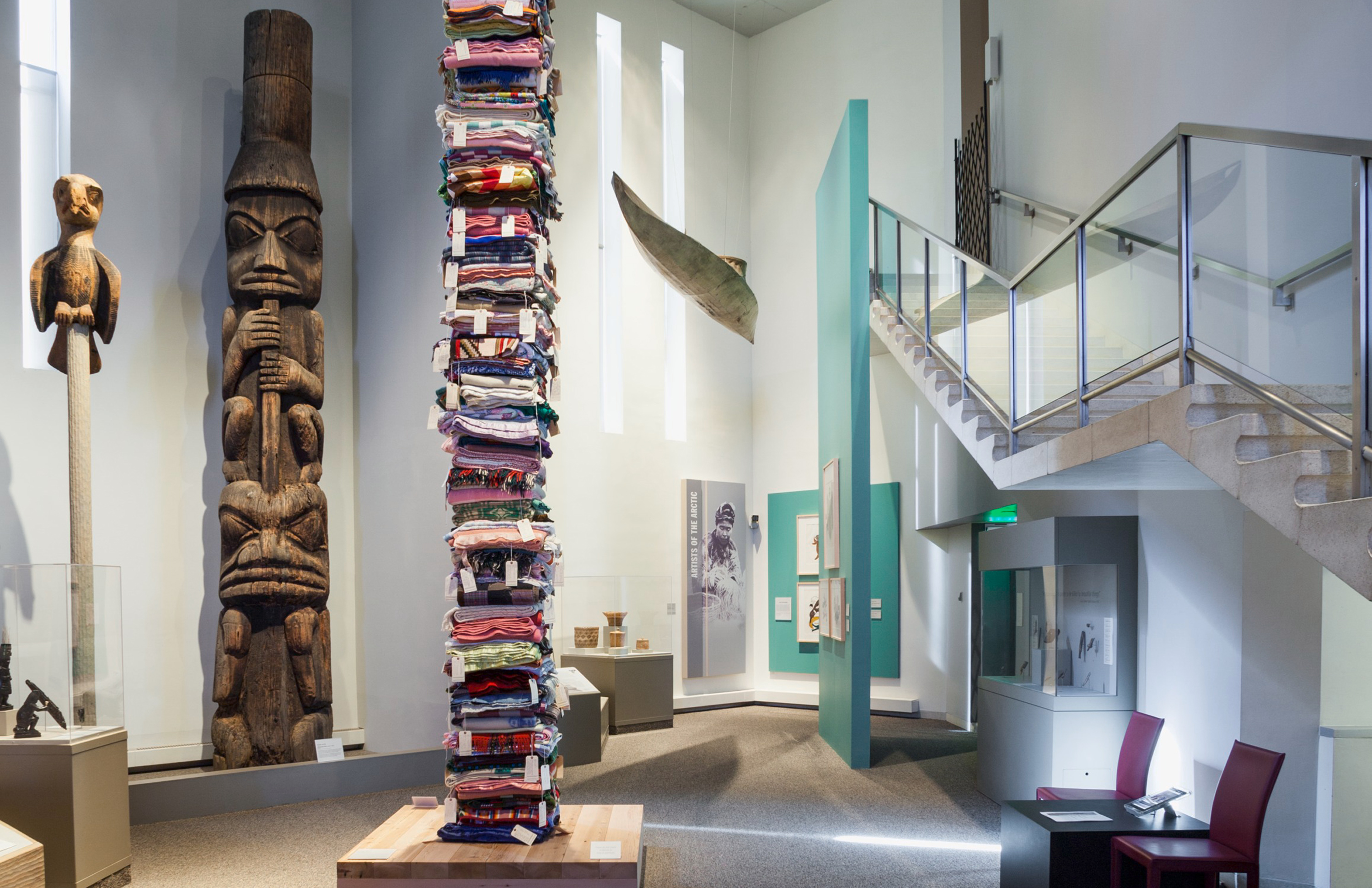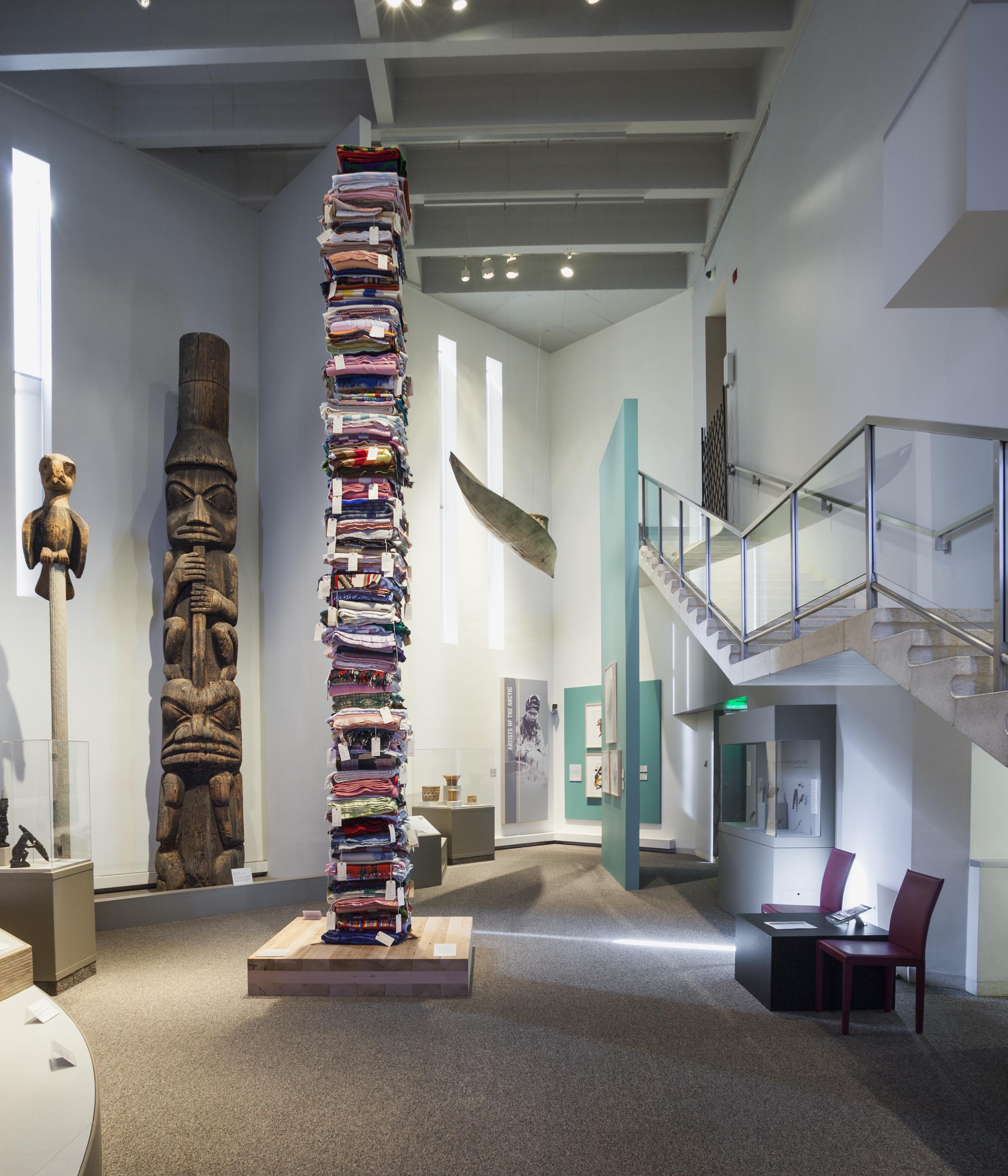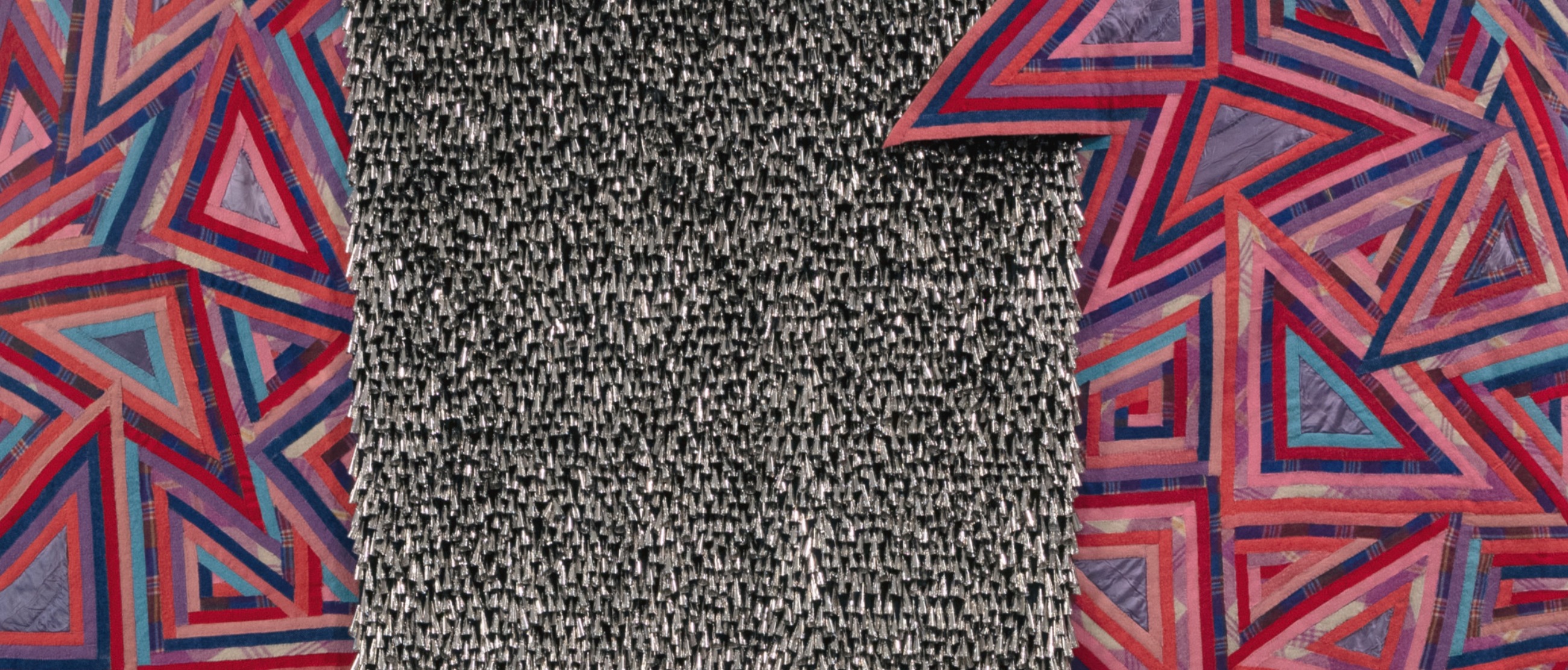On May 23, a brand-new exhibition will open at the Denver Art Museum. Each/Other: Marie Watt and Cannupa Hanska Luger is the first exhibition to feature together the work of Watt and Luger, two leading Indigenous contemporary artists whose processes focus on collaborative artmaking.
Watt says "collaboration has always been part of my artistic process, whether it's through gathering stories to incorporate into my work or listening to people share their stories in sewing circles.
Collaborative artmaking has the power to bond people, cultures, and community. For Watt, "every stitch is like a fingerprint." The idea of people interacting with her art applies to much more than the finished product. Watt believes art should be a social, participatory endeavor, which means her hands are not the only ones to shape her piece.

Marie Watt (Seneca and German-Scots), Blanket Story, Confluence, Heirloom, and Tenth Mountain Division, 2013. Wool and cotton blankets and reclaimed cedar. Native Arts Acquisition Fund, 2013.75.1-158. © Marie Watt
Looking Together
Marie Watt’s Blanket Story is on view in the Hamilton Atrium. For this piece, Watt asked individuals from the local Denver community to contribute a blanket along with its story. For many Native communities, blankets are given away to honor those who are witness to important life events. This work, made up of 157 blankets, is Watt's way of honoring the personal stories and life events of our community. Watts states, "We are received in blankets, and we leave in blankets. The work... is inspired by the stories of those beginnings and endings, and the life in between."
Download a PDF of the blanket stories to learn more about the blankets included in this sculpture.

Marie Watt (Seneca), Butterfly, 2015. Reclaimed wool blankets, satin binding, thread, cotton twill tape and tin jingles; 94 x 126 in. Denver Art Museum: Funds from Loren G. Lipson, M.D., Vicki & Kent Logan, with additional funds from Brian Tschumper, Nancy Benson, Jan & Mike Tansey, and JoAnn & Bob Balzer, 2016.1A-B. © Marie Watt.
Creating Together
Look closely at Marie Watt's Butterfly. She was inspired by two young female powwow dancers that described how they felt when dancing in jingle dresses. Large abstract butterfly motifs refer to one of the girls that described feeling like a butterfly, floating while fancy shawl dancing. An aspect of a jingle dress is that the dancer may write a wish and place it inside of the jingles, and if that jingle falls off during the dance the wish comes true. The Denver community wrote wishes inside of the jingles in Butterfly.
In this activity, reflect on Butterfly and learn how to make a sewing card of your own infused with an emotion, feeling, or memory.
Related Creativity Resources

Blanket Story: Confluence, Heirloom, and Tenth Mountain Division
“We are received in blankets, and we leave in blankets…The work is inspired by the stories of those beginnings and endings, and the life in between,” says Watt. In collaboration with the Denver Art Museum, Watt invited the Denver community to donate blankets, along with stories about them, to this piece. Over the course of the summer, 157 blankets were collected.

Blanket Story
Marie Watt is a multidisciplinary artist who engages communities in the creation of her work. As a citizen of the Seneca Nation, Watt models her approach on Indigenous ways of sharing knowledge and learning. For this piece, she asked individuals from the local Denver community to contribute a blanket along with its story.


The Art of the Samurai
Suit of Armor and Helmet is a unique object in our collection that looks functional but was actually made in admiration of Samurai’s of the past. Take a closer look at how this suit of armor balances delicate details and symbols of fierceness and consider what faithfulness, loyalty, and dedication might have meant in 18th century Japan.

From Art to Money and Everything in Between

Stepping Back in Time
Explore artworks from the museum’s collection by Claude Monet, Berthe Morisot, Paul Cézanne, Édouard Manet, Willard Leroy Metcalf, Pierre-Auguste Renoir, Childe Hassam, and others that tell a story about a complex time in Europe and America.

